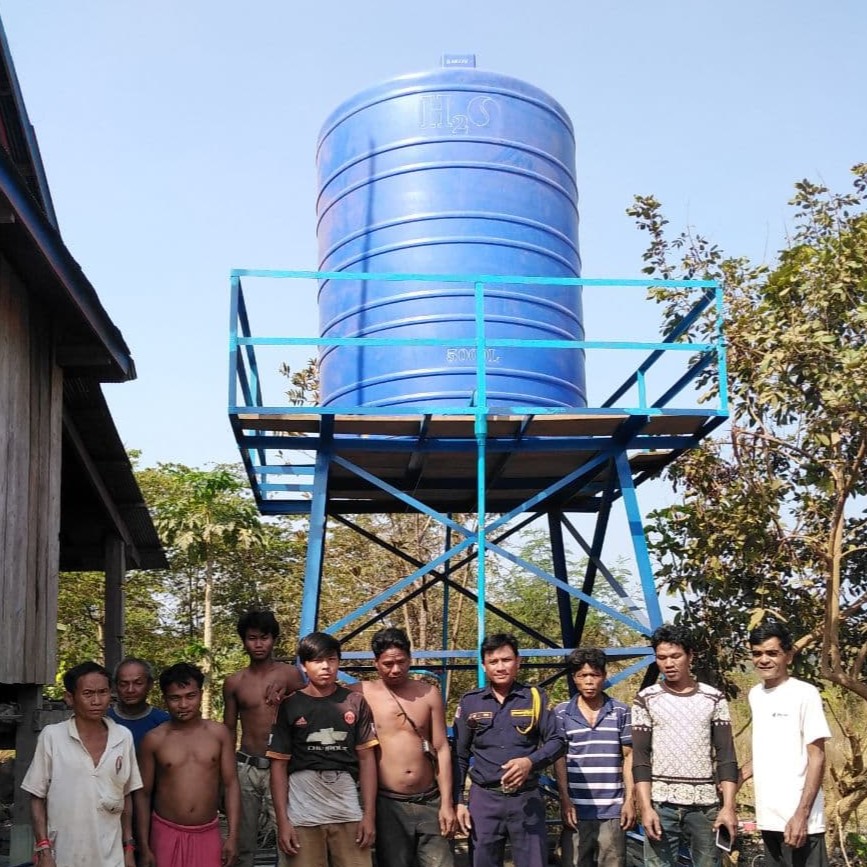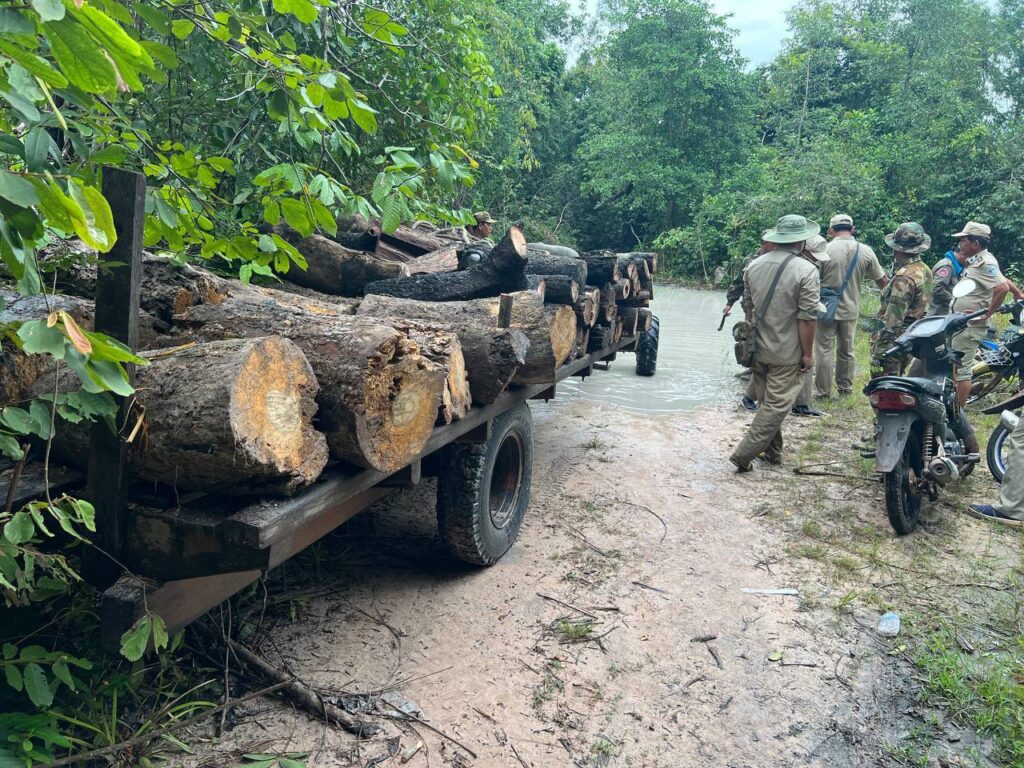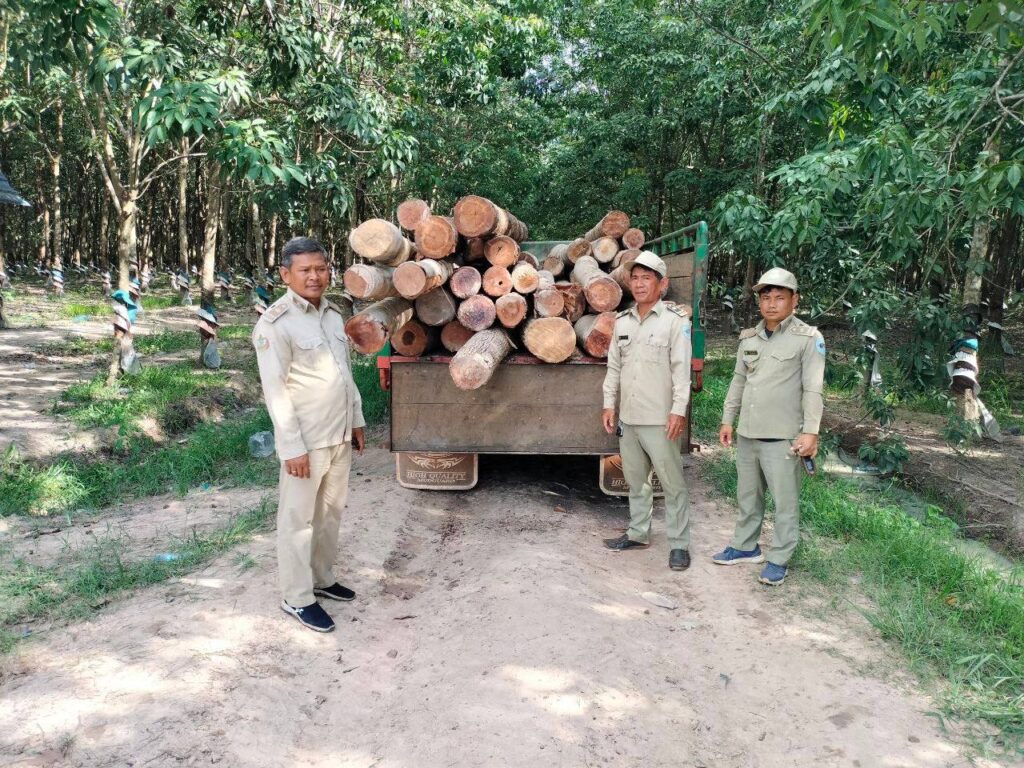TUMRING REDD+ TRUST FUND
What is the Tumring REDD+ Trust Fund?

The TF-SOP is enacted by the 7th Project Board Committee (PBC) meeting which is held at the FA in Phnom Penh, Cambodia on 14 December 2022 and presents basic principles of the TF-SOP and establishes it.
This TF-SOP is prepared and written jointly by the KFS and FA and comes into effect through consideration and decisions of the Trust Fund Management Committee (hereinafter referred to as the “TFMC”).
This TF-SOP shall be applied and complied by all relevant organizations (the KFS and FA) and trustees (Co-chairs and TFMC members).
In regard to the necessary matters relevant to the operation of the Trust Fund, the TFMC decision shall be made by unanimous consent of members of the TFMC within the scope of laws and regulations of both countries.
Purposes of the Fund?
The purpose of the Trust Fund is to reduce deforestation and forest degradation, improve better livelihoods, and enhance biodiversity conservation toward generating mitigation outcomes and forest carbon credits, and build capacity of relevant stakeholders. The purpose of TF-SOP is to provide a mechanism to mobilize and manage financial resources for sustainable financial resources management in order to implement the K-CRJP and to oversee and manage the use of the Trust Fund in a transparent and effective manner to achieve its purpose.

The Fund supports areas?

The Trust Fund shall be operated to ensure stable financial resources necessary for implementation of the K-CRJP activities smoothly.
The Trust Fund shall be operated following the below-mentioned principles.
(Relevance principle) Designed activities of the K-CRJP shall be aligned with stakeholders and beneficiaries’ circumstances and needs, and others.
(Effectiveness principle) The Trust Fund shall be operated to achieve outcomes of the K-CRJP.
(Publicness principle) The Trust Fund shall be operated in accordance with the Warsaw REDD+ Framework (WRF) by contemplating social, economic, and environmental ripple effects.
The social and biodiversity safeguard of the Trust Fund shall follow safeguard principles and scopes of Community·Climate·Biodiversity Alliance (CCBA) as a basis of monitoring and evaluation.
Cambodia National Safeguard Information System (NSIS) and the safeguard information of the K-CRJP shall be shared in the National Safeguard Information Summary which is reflected in the UNFCCC web platform.
The safeguard information of the K-CRJP Trust Fund shall secure transparency and public access on the information by disclosing it via project website (http://tumringredd.org/).
Tumring REDD+ Fund Management Governance
The managing organization of the Trust Fund shall be composed of Trust Fund Management Committee (TFMC) and Project Management Unit (PMU).
The TFMC shall be consisted of two Co-Chairs, respectively from the KFS and FA, and three (3) members each recommended from the KFS and FA and one (1) external auditor.
Two (2) Co-Chairs from the KFS and FA shall be ex-offixio members, and those are same representatives of the K-CRJP Board Committee (PBC).
The recommended member list from the KFS and FA shall be submitted in a written form to each Co-Chair to complete the composition of the TFMC by including below information.
- Nationality, full name, position, and organization
- Status on joining similar committee
- Pledge on conscientious observation as Co-Chair and a member
A person who is qualified to become a member of the TFMC shall not be refused to join without justifiable cause or shall not be subject to unfavorable conditions comparing to other members.
The term of TFMC members other than Co-Chairs is 3 years and could be renewed only once.
However, with the request from a Co-Chair the term of a member may be renewed more than once.
If a vacancy occurs within the TFMC, the country that recommended the member of withdrawal shall recommend an alternative member to join the TFMC. The alternative member shall have the remaining term of the previous member.
Each Co-Chair shall convene, conduct, and supervise the TFMC meeting annually.
The TFMC shall receive, review and approve the annual quarter plan.
The TFMC shall receive, review and approve the annual performance report from the PMU.
The TFMC shall receive and review the audit report from the auditor.
The TFMC shall review, amend, and adopt the SOP.
The TFMC shall designate one (1) external auditor as a third party to audit the Trust Fund execution annually in the manner of transparency following the below duties.
- Audit the annual Trust Fund expenditure history
- Record the annual Trust Fund expenditure history and produce and seal the annual audit report
- Report the annual Trust Fund expenditure audit report to the TFMC
The auditor shall not have any decision-making and he/she shall be associated only with the auditing.
The PMU in this SOP shall refer to Paragraph 3, Project Management Unit (PMU) of the initial K-CRJP MOU signed on 10th December, 2014.
The PMU shall devise each plan on a quarterly and annual base to operate the Trust Fund in an effective and efficient way by implementing following below items.
- Produce the annual quarter plan to operate the Trust Fund and report to the TFMC by the first Friday of December, each previous year.
- Execute the Trust Fund in accordance with the annual quarter plan approved by the TFMC
- Produce annual performance report including the execution of annual quarter plan and report to the TFMC by the first Friday of December, each year.
- Record and keep tracking the Trust Fund expenditure history
- Prepare and submit all relevant materials to the Trust Fund expenditure as per request by the auditor
- When confirming the TFMC meeting schedule, the PMU shall distribute all materials (concept note, agenda, invitation etc.) prior to the meeting to each Co-Chair and members and organize the meeting.

The hydrology research was conducted in the project area, studying relation between water and forests.

The project law enforcement team confiscated illegal logged fire woods in the project area.

The officer of the Kampong Thom provincial Department of Agriculture, Forestry and Fisheries provided the new cassava species, resisting to temperature and pests, to the beneficiaries (community forest members) in the project area.
Tumring REDD+ Trust Fund Flow

Before expenditure of the Trust Fund, the PMU shall make the annual quarter plan to operate the Trust Fund and report it to the TFMC to get its approval.
The PMU shall submit the annual quarter plan by the first Friday of December, each year to TFMC and each Co-Chair shall convene on January following year of submission.
Tumring REDD+ Trust Fund Impacts Management
Forest Carbon
1 Protecting forest carbon stock areas
2 Reduced deformation rate
3 Generating a net emission reduction

Biodiversity and Habitats
1 Protecting habitat areas
2 Conserving threatened and endangered fauna and flora species – flagship species
3 Others Co-benefits (include adaptation, environmental services.)

Livelihood and Income Generation
1 Increase incomes of participated local community
2 Improving degraded agricultural land and enhancing agricultural productivity
3 Agriculture Cooperatives and link to market link
4 community education, community health, clean water, other community development projects.

Forest Governance
1 Increasing stakeholders’ participation and their capacity
2 Strengthening community roles and gender mainstreaming
3 Forest law enforcement by local FA and community

Policy Impact
1 Contributing to national policies on REDD+ and climate change
2 Developing a better financial management model
Tumring REDD+ Trust Fund Monitoring an Evaluation
The PMU shall track the Trust Fund flow (in and out) and produce performance report annually (by first Friday of December) to the TFMC.
As noted previously, this Trust Fund SOP is not all-inclusive. It would be impossible to outline every possible type of expenditure which might be made utilizing the Trust Fund. However, when the Trust Fund expenditure decision must be made, it should be made in recognition of the public nature of these funds and in moderation and good taste.

